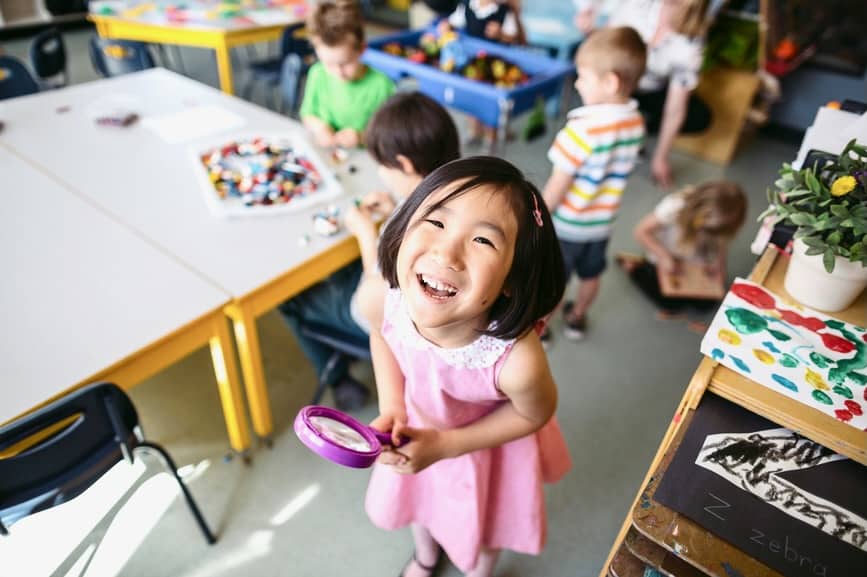It’s been more than 100 years since Dr. Maria Montessori first developed the Montessori method of education, which focuses on building children’s resourcefulness and natural abilities through practical play.
Today, Montessori is the most widespread alternative to traditional education. There are thousands of Montessori schools across the globe where students practice daily life skills, learn through hands-on activities, and explore the interdisciplinary nature of science and social studies.
Two main tenets of a Montessori education are mixed-age classrooms and no grades or homework. At Montessori schools, younger children have long blocks of time – up to three hours at once – to freely interact with specially developed learning materials. As children get older, they participate in extensive research projects, which they present to their class. At all ages, you won’t see rows of desks or assigned seats; students are welcome to move about classrooms freely and make choices about what to work on.
Clearly, Montessori takes a different approach compared to traditional education. But is it better for kids?
A new systematic review aims to answer that question. The review, published by the Campbell Collaboration, includes 32 high-quality studies of Montessori-educated students in eight countries. Students in the studies range in age from preschool to high school and come from a variety of socio-economic backgrounds.
The review compares students in Montessori and traditional schools to measure who has better outcomes, both academically, socially, and emotionally. What did it find? In a nutshell, Montessori education has meaningful and positive benefits compared to traditional education.
Montessori students were, on average, a full school year ahead by sixth grade, according to the analysis. The most significant academic gains were in language, math, and general academic ability; there was not a significant benefit in science or social studies.
In nonacademic measures, Montessori students also excelled; they demonstrated stronger executive function, including self-control and working memory, and reported a more positive school experience overall compared to traditional students. Creativity did not vary significantly between Montessori and traditional students.
The analysis found that Montessori education had a more significant effect on preschool and elementary students compared to middle and high school students.
The authors do note some limitations in the research on Montessori schools. Montessori is not trademarked and is therefore implemented differently in different locations; any school can say they offer a Montessori education. The schools that best follow the traditions established by Maria Montessori have teachers trained by organizations such as the Association Montessori Internationale and provide learning materials developed by Maria Montessori and her collaborators. Not all the studies in the review discussed how schools implemented the Montessori method, and a few clearly deviated from the Montessori principles.
The take-home message: Despite the limitations of the research, Montessori education – as it is implemented in the real world – has positive impacts on both academics and social and emotional skills.
Source: Psychology Today







